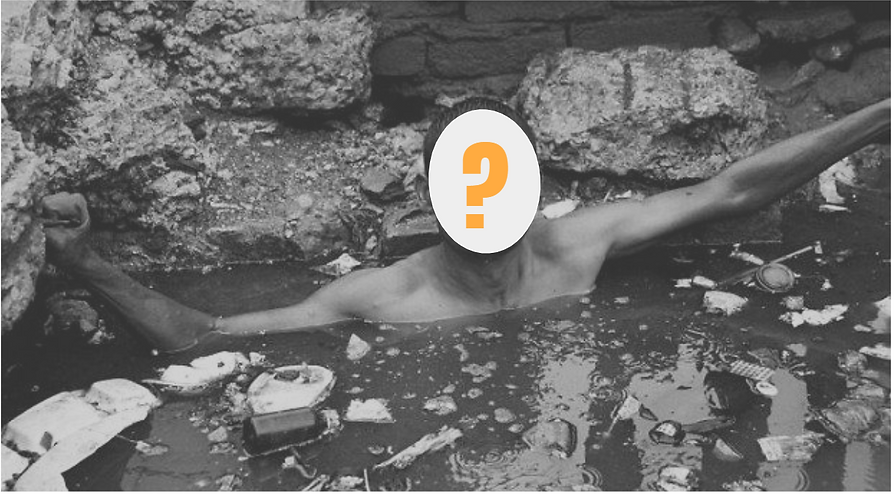Threshold
Narrative Design | Speculative Design | Social Impact


.png)
Threshold is a critical design project that exposes systemic neglect and challenges viewers to see exploitation as part of a larger, interconnected structure. It uses atypical publication as a provocation to spark collective reflection and action.
.png)
Why is
this project relevant?
The project is relevant because it tackles a critical and long-standing issue that impacts the lives of countless individuals every day.
Manual scavenging has been illegal in India since 1993, yet it continues, and carries severe social, economic, and health implications. The relevance of the project lies in its comprehensive approach to addressing the exploitation and stigma faced by manual scavengers.
Manual scavenging is a practice of manually cleaning, carrying, disposing of, or otherwise handling, human excreta in an insanitary latrine, in an open drain or sewer or in aseptic tank or a pit.
What is
Manual Scavenging?
This narrow definition doesn’t fully capture the realities of manual scavenging, as it often ignores the other form of occupation where workers face similar risks and stigma. However, the act also says workers using safety gear or mechanized tools are not identify as "manual scavengers."
Are human excreta the only that they have to deal with?
Are Manual Scavengers the only ones exposed to health risks?



The practice of manual scavenging is an ingrained social and systemic issue rooted in the caste-based system, poverty, and societal neglect. Despite it being illegal. It continues due to a lack of enforcement, economic desperation, and ignorance about the conditions faced by manual scavengers.
Project highlight
The project seeks to break the cycle of
exploitation faced by manual scavengers by
engaging people in their harsh realities. Through
sensory and narrative experiences, it aims to
foster empathy, spark meaningful dialogue, and
shed light on the systemic injustices that trap
them. The goal is to inspire understanding and
collective action to restore their dignity and rights.
The kit is both a "cry for help" and a call to action, addressing the complexities of the issue while urging collective responsibility. Its ultimate goal is to shift perspectives, generate meaningful conversations, and inspire actionable solutions.
Product design
Ethnographic research
Systems design
User-centered research.

Concept
The kit is divided into three parts
Vocalization
This section shares the voices of manual scavengers through their personal stories, experiences, and questions that provoke thought and empathy.
Perceptions
Focused on presenting facts and data, this part challenges preconceived notions and provides a deeper understanding of the reality they face.
Action
This section envisions the future outcomes of our actions (or inactions) and inspires steps toward breaking the cycle of exploitation. It’s a call to create a meaningful change.
How will it work?
Attract attention: Engage the audience with content to spark curiosity.
Inform and provoke: Provide meaningful stories and facts to build understanding.
Trigger Action: Motivate individuals to reflect, discuss, and take steps toward change.





This is just a small step. It won’t solve the problem on its own, but it aims to create awareness, unravel the layers of this issue, and offer a glimpse into the daily struggles and experiences of manual scavengers.
This video contains an overview of the project's background and information about the design solution.

more research details & information,
can be found in this document.
Mentor
Anusha Dhawan
The Design Village
This project was done under FDP Module
at the The Design Village,
India Aug'23 to Dec'23


